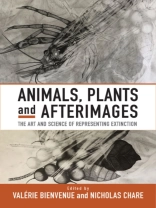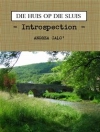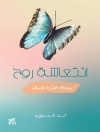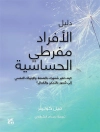The sixth mass extinction or Anthropocene extinction is one of the most pervasive issues of our time. Animals, Plants and Afterimages brings together leading scholars in the humanities and life sciences to explore how extinct species are represented in art and visual culture, with a special emphasis on museums. Engaging with celebrated cases of vanished species such as the quagga and the thylacine as well as less well-known examples of animals and plants, these essays explore how representations of recent and ancient extinctions help advance scientific understanding and speak to contemporary ecological and environmental concerns.
Jadual kandungan
Acknowledgements
List of illustrations, Figures and Tables
Introduction: Representing Extinction: Art, Science and Afterimages
Valérie Bienvenue and Nicholas Chare
Part I: Dialogues about Extinction
Chapter 1. The Dinosaur as Cultural Symbol and Totem: W.J.T. Mitchell in Conversation
W.J.T. Mitchell
Chapter 2. Visualizing Extinction: Harriet Ritvo in Conversation
Harriet Ritvo
Chapter 3. ‘Putting Nature Back Together Again’: Stuart Pimm in Conversation
Stuart Pimm
Part II: Indigenous Peoples and Extinction
Chapter 4. The Beothuk, the Great Auk and the Newfoundland Wolf: Animal and Human Genocide in Canada’s Easternmost Province
Nicholas Chare
Chapter 5. Cultural Memory of Recent Extinctions: A Chinese Perspective
Samuel T. Turvey
Chapter 6. Grief, Extinction, and Bilhaa (Abalone)
hagwil hayetsk (Charles R. Menzies)
Part III: Representing Avian and Insect Extinctions
Chapter 7. Sparrows with teeth and claws? Reconstructing the Cretaceous Enantiornithes (Aves: Ornithothoraces)
Jingmai O’Connor
Chapter 8. Rare Birds and Rare Books The Species as Work of Art
Gordon M. Sayre
Chapter 9. The Virtual Realities of Species Revivalism: Restoring the Kaua‘i ‘Ō‘ō Bird in Jakob Kudsk Steensen’s Re-Animated
Sarah Bezan
Chapter 10. Insects, Spiders, Snails and Empathy: Representing Invertebrate Extinctions in Natural History Museums
Pedro Cardoso
Part IV: Representing Extinct Plants and Fungi
Chapter 11. Reconstructing Lycopsids Lost to the Deep Past
Jeffrey P. Benca
Chapter 12. Ellis Rowan, Extinction and the Politics of Flower Painting
Jeanette Hoorn
Chapter 13. Towards Extinction: Mapping the Vulnerable, Threatened and Critically Endangered Plant in ‘Moments of Friction’
Dawn Sanders
Chapter 14. Sweetness, Power, Yeasts, and Entomo-terroir
Robert R. Dunn, Monica C. Sanchez and Matthew Morse Booker
Part V: Representing Extinct Mammals
Chapter 15. Animal Extinction, Film and the Death Drive
Barbara Creed
Chapter 16. Tasmanian Tiger: Precious Little Remains
David Maynard
Chapter 17. From the General to the Particular: Piecing together the Life and Afterlife of A544, Louis XVI’s Quagga
Valérie Bienvenue
Part VI: Exhibiting Extinction
Chapter 18. Three Variations on the Theme of Extinction: Looking Anew at the Art and Science of Mark Dion
Anne-Sophie Miclo
Chapter 19. The Exhibition of Extinct Species: A Critique
Norman Mac Leod
Chapter 20. Exhibiting Extinction: Thylacines in Museum Display
Kathryn Medlock
Afterword: After Extinction
Valérie Bienvenue and Nicholas Chare
Contributors
Index
Mengenai Pengarang
Nicholas Chare is Professor of Art History in the Department of History of Art and Film Studies at the Université de Montréal. He is the author of After Francis Bacon (2012). In 2017, with Sébastien Lévesque and Silvestra Mariniello, he founded the baccalaureate (BACCAP) in visual cultures at the Université de Montréal.












